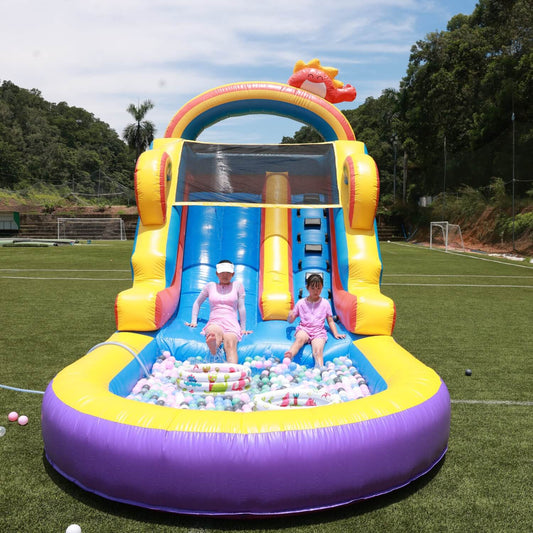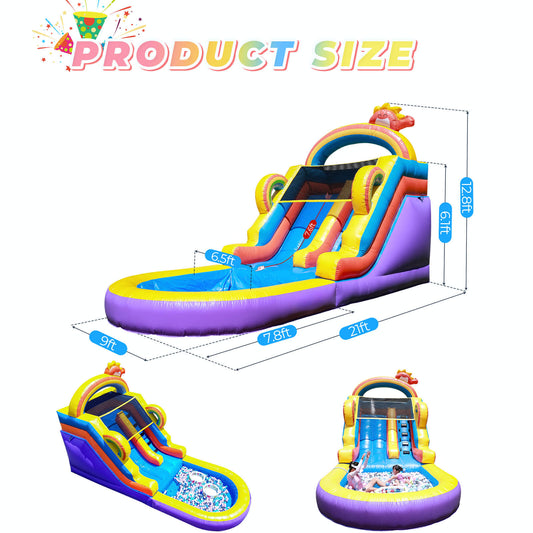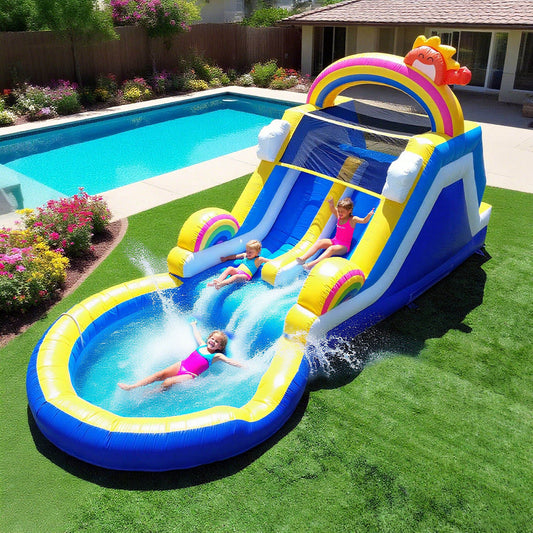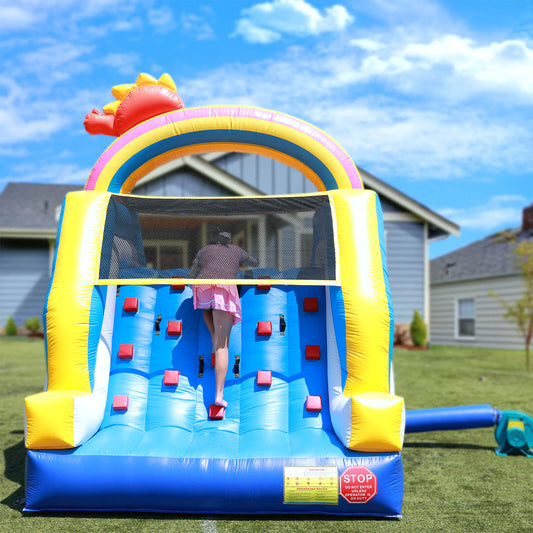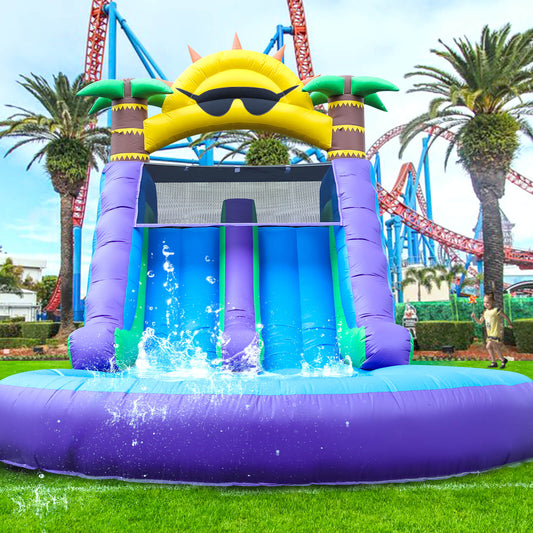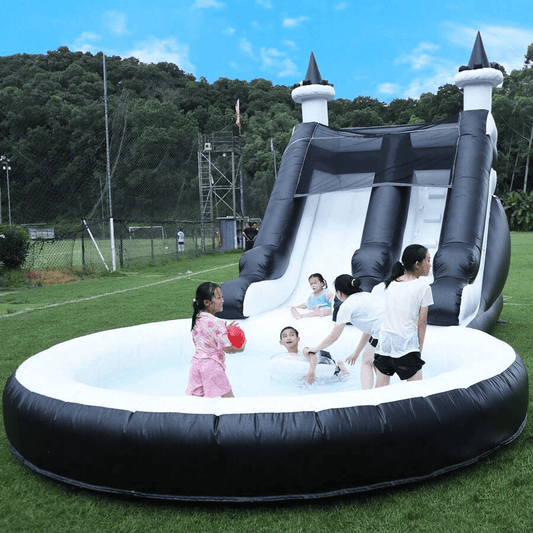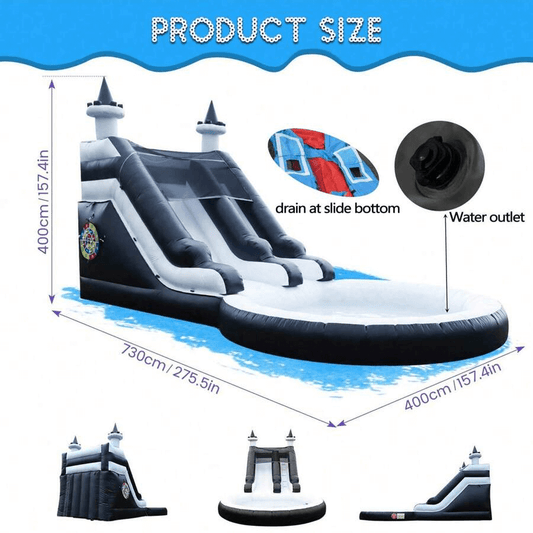
How to Make a Slide Slippery
Are you Googling how to make a slide slippery? Water splashing activities are an essential part of summer fun, offering a refreshing escape from the sweltering heat while providing endless entertainment. The thrill of slipping on water slides and the excitement of a pool party not only helps beat the heat of the season but also brings fun and laughter to your otherwise dull day.
However, creating the ultimate water slide experience hinges on one crucial element: slipperiness. You might have invested in an inflatable water slide for the pool in your backyard, but without it being slippery, smooth, and fast, your fun could come to a halt.
So, how to make a slide slippery? Here are the best practices for making any water slide slippery, ensuring endless thrills for all who take the plunge.
Factors Affecting the Slipperiness of a Water Slide
Achieving maximum slipperiness for your water slide involves considering several factors. Here is a detailed look at the key elements:
Material of the Slide
The material of the slide plays a crucial role in its slipperiness. Slides made from smooth, durable materials such as PVC or polyethylene are ideal because they reduce friction and allow for a smoother ride. Ensure the slide's surface is free of any rough spots or scratches that could impede the sliding experience.
Water Flow
Proper water flow is essential for keeping your big inflatable water slide slippery. Water reduces friction and allows riders to glide smoothly. Make sure your water source provides a continuous, even flow across the entire slide surface. Utilizing a garden hose equipped with a spray attachment or a built-in water pump system can help achieve consistent water distribution.
Environmental Factor
Environmental conditions like temperature and sunlight can impact the slipperiness of your slide, which is an important consideration in how to make a slide slippery. On hot, sunny days, the slide material can become less slippery. To combat this, place the slide in a shaded area and ensure a steady flow of cool water to maintain its slipperiness.
User Factor
User characteristics such as different body types and weights can influence the speed and slipperiness of the slide. To enhance the smoothness of the sliding surface, encourage swimwear made of nylon or spandex and avoid clothing with buttons or zippers.
Tips on How to Make a Slide Slippery
Now, let’s answer today’s main question of how to make a slide slippery. The following tips are applicable to the question of how to make slip and slide slippery.
- Water
Water is the most common and accessible lubricant for making a slide slippery. Simply spraying or pouring water onto the slide's surface reduces friction, allowing for smoother sliding. Regularly wetting the slide ensures consistent slipperiness, enhancing the sliding experience.
- Soapy Water
Adding a small amount of dish soap to water creates soapy water, which further reduces friction and enhances slipperiness. Be cautious with the amount of soap used to avoid creating excessive suds, which can make the slide too slippery and potentially hazardous.
- Lubricating Oils
Certain oils, such as silicone-based lubricants or baby oil, can be applied to the slide surface to increase slipperiness. These oils create a smooth, slick surface that allows for faster sliding. Apply the oil sparingly but evenly across the slide's surface to avoid excessive buildup.
- Professional Slide Lubricants
You can also invest in specialized slide lubricants designed specifically for water slides. These lubricants are formulated to provide long-lasting slipperiness and are often used in commercial water parks. However, make sure to follow the manufacturer's instructions when applying the lubricants on the slide to ensure safety.
Tips on Maintaining the Inflatable Water Slide
Now that you know how to make a slide slippery, it’s time to understand essential maintenance tips for ensuring the longevity of your slide.
Regular Cleaning of Water Slide Surfaces
Clean the slide surfaces regularly with water and gentle soap to remove dirt and debris, as they can significantly affect the slide's slipperiness.
Inspecting Water Slides for Wear and Tear
Routinely inspect the slide for any signs of wear, tear, or damage, such as punctures, tears, or loose seams. Address any issues in a prompt way to prevent further damage.
Replacing Worn Parts
If any parts of the slide, such as anchors, straps, or inflatable sections, show significant wear or damage, replace them promptly.
Protecting Water Slide Surfaces from Direct Sunlight and Harsh Weather
Prolonged exposure to direct sunlight and harsh weather conditions can cause the slide material to deteriorate. To extend its lifespan, store your inflatable water slide in a cool and dry area when not in use.
Wrapping It Up
So now you know how to make a slide slippery. Proper maintenance, coupled with understanding how to make a slide slippery, ensures a safe and thrilling sliding experience. Bouncinlife provides a vibrant range of inflatable slides, perfect for creating your backyard waterpark.
Manufactured with high-quality gloss PVC, our sizeable inflatable water slides prioritize safety while providing endless slip-and-slide fun. All our products come with a reasonable warranty and return policy to provide you peace of mind. With Bouncinlife, you and your family can splash away the heat and cool off in style!

